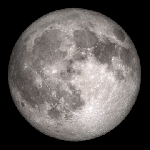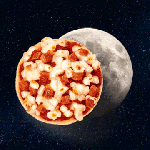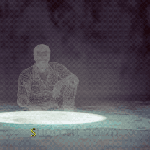Dominique Luchart's Blog, page 614
May 25, 2021
The stages of the Super Flower Blood Moon lunar eclipse of 2021 explained, ,

Super Flower Blood Moon Eclipse
[image error]
(Image credit: Courtesy of Imelda Joson and Edwin Aguirre)If you take a photo of the 2021 total lunar eclipse let us know! You can send images and comments to spacephotos@space.com.
No avid skywatcher ever misses a total eclipse of the moon. This celestial pageant is often more beautiful and interesting than one would think. During the time that the moon is entering and later emerging from Earth’s shadow, secondary phenomena may be overlooked.
To help prepare for the upcoming eclipse of May 25-26, Space.com skywatching columnist Joe Rao — a veteran of 18 total lunar eclipses — has prepared a timeline of the stages of the total lunar eclipse, including some of the things you might expect to see.
Super Flower Blood Moon 2021:
Where & when to see the supermoon eclipse
Webcast info:
How to watch the supermoon eclipse of 2021 online
In the above timetable, local circumstances are provided for seven different time zones. All times are for a.m. on Wednesday (May 26), except when marked with an asterisk (*), which corresponds to p.m. on Tuesday (May 25). Where dashes are provided, it means that moonset has intervened, putting an end to the spectacle.
In examining the timetable, you’ll notice that farther west, more of the eclipse will be observable before the moon sets. Generally speaking, places east of the Mississippi River will see some of the opening stages of the eclipse, while places west of the Mississippi will see totality and some of the closing stages; only along parts of the immediate Pacific coast will umbral stages be visible from start to finish.
Below are the various stages of the “blood moon,” fully described:
1) The moon enters the penumbral shadow[image error]
The moon first enters the penumbra, or the outer part of Earth’s shadow, where the shadow is still penetrated by some sunlight. (Image credit: NASA)The shadow cone of the Earth has two parts: a dark, inner umbra, surrounding by a lighter penumbra. The penumbra is the pale outer portion of the Earth’s shadow.
Although the eclipse begins officially at this moment, this is in essence an academic event. You won’t see anything unusual happening to the moon — at least not just yet. The Earth’s penumbral shadow is so faint that it remains invisible until the moon is deeply immersed in it. We must wait until the penumbra has reached roughly 70% across the moon’s disk.
For about the next 40 minutes the full moon will continue to appear to shine normally although with each passing minute it is progressing ever deeper into the Earth’s outer shadow.
2) Earth’s penumbral shadow appears[image error]
This comparison image of the penumbral lunar eclipse on Feb. 10, 2017 shows how much of the moon was darkened during the relatively minor eclipse. The image was taken by a Slooh.com telescope in Spain’s Canary Islands. (Image credit: Slooh.com)Now the moon has progressed far enough into the penumbra so that it should be evident on the moon’s disk. Start looking for a very subtle light shading to appear on the moon’s left portion. This will become increasingly more and more evident as the minutes pass; the shading appearing to spread and deepen.
Just before the moon begins to enter the Earth’s dark umbral shadow the penumbra should appear as an obvious smudge or tarnishing of the moon’s left portion.
3) The moon enters Earth’s umbral shadow[image error]
The moon begins passing into Earth’s shadow during a total lunar eclipse on Jan. 20, 2019, in this view from the Griffith Observatory in Los Angeles, California. (Image credit: Griffith Observatory)The moon now begins to cross into the Earth’s dark central shadow, called the umbra. A small dark scallop begins to appear on the moon’s lower left-hand (southeastern) limb. The partial phases of the eclipse begin; the pace quickens and the change is dramatic.
The umbra is much darker than the penumbra and fairly sharp-edged. As the minutes pass the dark shadow appears to slowly creep across the moon’s face. At first the moon’s limb may seem to vanish completely inside of the umbra, but much later, as it moves in deeper, you’ll probably notice it glowing dimly orange, red or brown.
Notice also that the edge of the Earth’s shadow projected on the moon is curved. Here is visible evidence that the Earth is a sphere, as deduced by Aristotle from Iunar eclipses he observed in the 4th century BC. Almost as if a dimmer switch was slowly being turned down the surrounding landscape and deep shadows of a brilliant moonlit night begin to fade away.
4) The moon is 75% coveredWith three-quarters of the moon’s disk now eclipsed, that part of it that is immersed in shadow should begin to very faintly light up, similar to a piece of iron heated to the point where it just begins to glow.
It now becomes obvious that the umbral shadow is not complete darkness. Using binoculars or a telescope, its outer portion is usually light enough to reveal lunar seas and craters, but the central part is much darker, and sometimes no surface features are recognizable. Colors in the umbra vary greatly from one eclipse to the next, reds and grays usually predominate, but sometimes browns, blues and other tints are encountered.
5) Less than five minutes to totalitySeveral minutes before (and after) totality, the contrast between the remaining pale-yellow sliver and the ruddy-brown coloration spread over the rest of the moon’s disk may produce a beautiful phenomenon known to some as the “Japanese lantern effect,” a term first coined by Long Island astrophotographer Peter A. Leavens in the 1950s.
6) Total eclipse begins[image error]
The total lunar eclipse of Jan. 20-21, 2019, captured by astrophotographers Imelda Joson and Edwin Aguirre from the suburbs of Boston. From left to right: The start of totality, at 11:41 p.m. EST on Jan. 20; the middle of totality, at 12:12 a.m. on Jan. 21; and the end of totality at 12:44 a.m. (Image credit: Courtesy of Imelda Joson and Edwin Aguirre)When the last of the moon enters the umbra, the total eclipse begins. How the moon will appear during totality is not known. Some eclipses are such a dark gray-black that the moon nearly vanishes from view. At other eclipses, the moon can glow a bright orange.
The reason the moon can be seen at all when totally eclipsed is that sunlight is scattered and refracted around the edge of the Earth by our atmosphere. To an astronaut standing on the moon during totality, the sun would be hidden behind a dark Earth outlined by a brilliant red ring consisting of all the world’s sunrises and sunsets. The brightness of this ring around the Earth depends on global weather conditions and the amount of dust suspended in the air.
A clear atmosphere on Earth means a bright lunar eclipse. If a major volcanic eruption has injected particles into the stratosphere during the previous couple of years, the eclipse is very dark. But, as of this writing, no such eruption has happened since our last total lunar eclipse in January 2019, so the betting is that this eclipse will be relatively bright.
Related: Why does the moon turn red during a total lunar eclipse?
7) Middle of totality[image error]
The total lunar eclipse starts once the moon is completely inside the umbra. And the moment of greatest eclipse happens with the moon is halfway through the umbra, as shown in this graphic. (Image credit: NASA)The moon is now shining anywhere from 10,000 to 100,000 times fainter than it was just a couple of hours ago. Since the moon is moving to the north of the center of the Earth’s umbra, the gradation of color and brightness across the moon’s disk should be such that its lower portion should appear darkest, with hues of deep copper or chocolate brown. Meanwhile, its upper portion — that part of the moon closest to the outer edge of the umbra — should appear brightest, with hues of reds, oranges and even perhaps a soft bluish-white.
In a predawn sky, observers away from bright city lights will notice a much greater number of stars than were visible earlier in the night.
The moon will be the constellation of Scorpius, the scorpion, just south of the star Graffias, with the entire retinue of bright summer stars and constellations spread out to the north and east of the moon. The darkness of the sky is impressive. The surrounding landscape has taken on a somber hue. Before the eclipse, the full moon looked flat and one-dimensional. During totality, however, it will look smaller and three-dimensional — almost translucent — like some weirdly illuminated ball suspended in space.
Before the moon entered the Earth’s shadow, the temperature on its sunlit surface hovered at 266 degrees Fahrenheit (127 degrees Celsius). Since the moon lacks an atmosphere, there is no way that this heat could be retained from escaping into space as the shadow sweeps by. Now, in shadow, the temperature on the moon has dropped to minus 146 degrees F (99 degrees below zero C). A drop of 412 degrees F (226 degrees C) in just over an hour!
8) Total eclipse endsThe emergence of the moon from the shadow begins. The first small segment of the moon begins to reappear, followed again for the next several minutes by the Japanese lantern effect.
[image error]
The “Japanese lantern effect” is seen during a lunar eclipse. (Image credit: Larry Johnson/Wikimedia Commons/CC BY 2.0)9) The moon is 75% coveredAny vestiges of coloration within the umbra should be disappearing now. From here on, as the dark shadow methodically creeps off the moon’s disk it should appear black and featureless.
10) Moon leaves umbraThe dark central shadow clears the moon’s right hand (western) limb.
11) Penumbral shadow fades awayAs the last, faint shading vanishes off the moon’s right portion, the visual show comes to an end.
12) Moon leaves penumbraThe eclipse “officially” ends, as the moon is completely free of the penumbral shadow.
Joe Rao serves as an instructor and guest lecturer at New York’s Hayden Planetarium . He writes about astronomy for Natural History magazine , the Farmers’ Almanac and other publications. Follow us on Twitter @Spacedotcom and on Facebook .
The post The stages of the Super Flower Blood Moon lunar eclipse of 2021 explained, , appeared first on NEWDAWN Blog.
Bagel Bites is giving away ‘moon deeds’ and snacks for the Super Flower Blood Moon, ,

To celebrate the “Super Flower Blood Moon” eclipse on Wednesday (May 26), the company behind Bagel Bites says it’s giving away lunar real estate to 100 social media fans.
During the 14 minutes of totality — when the moon will be in Earth’s dark, inner shadow, known as the umbra — Twitter users will have a chance to win a “moon deed” and own an acre of property on the moon — at least that’s what Kraft Heinz, the company that makes Bagel Bites, is claiming.
“In honor of the lunar eclipse that lasts 14 minutes (exactly how long it takes to cook Bagel Bites), we’re celebrating by giving away acres of the moon. Yeah, that moon,” Bagel Bites officials wrote in a description of the contest, called “Total Eclipse of the Bite.” The legitimacy of these lunar deeds could be up for debate, but at the very least winners can get some free Bagel Bites!
Super Flower Blood Moon 2021: Where, when and how to see the supermoon lunar eclipse
Super Flower Blood Moon Eclipse
[image error]
(Image credit: Courtesy of Imelda Joson and Edwin Aguirre)If you take a photo of the 2021 total lunar eclipse let us know! You can send images and comments to spacephotos@space.com.
To enter the contest, send a tweet using the hashtag “#BBSweepstakes” on Wednesday (May 26) between 7:11 a.m. EDT (1111 GMT) and 12:59 p.m. EDT (1659 GMT), during the total phase of the lunar eclipse. You must be at least 18 years old and live in the United States to be eligible for a prize.
On Friday (May 28), 100 randomly selected winners will receive a “personalized deed showing winner’s ownership of an acre of land on the moon,” and a coupon for an unspecified amount of free Bagel Bites, according to the official contest rules. The approximate retail value of each prize is $58, the rules state, but it’s not clear how that amount is allocated between the acre of lunar property and the Bagel Bites.
‘Super Flower Blood Moon’ webcasts: How to watch the supermoon eclipse of 2021 online
Those “moon deeds” Bagel Bites plans to give away may not hold much legal ground if the winners try to stake a claim on those acres of lunar land. But international space law is a bit murky — or rather, outdated — when it comes to private companies.
The international Outer Space Treaty bars nations from claiming territory on celestial bodies. However, that treaty was written before the private space sector emerged and therefore does not include any rules dictating what commercial space companies can and cannot do.
Related: Who owns the moon? A space lawyer answers
[image error]
Do you want to own property on the moon? Bagel Bites can make that dream come true — sort of. (Image credit: Kraft Heinz)“As far as title goes, it’s a gray area,” international lawyer and space law expert Timothy Nelson, who works for the firm Skadden in New York City, told Space.com in 2011. And it’s a gray area that entrepreneurs have been able to exploit.
For example, Dennis Hope of Gardnerville, Nev., claims to have sold 611 million acres of property on the moon, Mars, Venus, Mercury Jupiter’s moon Io through his company Lunar Embassy Corp. Several other companies have similarly sold property on other solar system destinations or offered to name craters for a price. (Only the International Astronomical Union can officially name objects in the solar system.)
Regardless of whether the “moon deeds” are legitimate, you can at least score some real, tangible Bagel Bites for free during the total lunar eclipse.
Email Hanneke Weitering at hweitering@space.com or follow her on Twitter @hannekescience. Follow us on Twitter @Spacedotcom and on Facebook.
Join our Space Forums to keep talking space on the latest missions, night sky and more! And if you have a news tip, correction or comment, let us know at: community@space.com.
The post Bagel Bites is giving away ‘moon deeds’ and snacks for the Super Flower Blood Moon, , appeared first on NEWDAWN Blog.
Boom! Studios adds to their ‘Dune’ comic lineup with new ‘Blood of the Sardaukar’, ,

Sure, we know it seems like an insufferably long time before we’ll be able to see director Denis Villeneuve’s (“Blade Runner: 2049,” “Arrival”) big screen take on author Frank Herbert’s “Dune” this fall, but we’ve got something that just might tide you over come summertime.
Hot on the heels of its “Dune: House Atreides” comic book series released last year, Boom! Studios has just announced “Dune: Blood of the Sardaukar #1,” a heroic, crimson-stained saga that expands the spice-laden sci-fi mythology of “Dune.” It’s adapted and scripted by New York Times bestselling authors Brian Herbert and Kevin J. Anderson, and illustrated by artist Adam Gorham (“The New Mutants: Dead Souls”), colorist Patricio Delpeche (“Origins”), and letterer Ed Dukeshire (“Once & Future”), all in partnership with Herbert Properties LLC.
Here’s the official synopsis:
“When the choice is vengeance or honor, which lies at the heart of a Sardaukar? Jopati Kolona is one of the Sardaukar: the emperor’s elite military unit. The Sardaukar are unbeatable, unbending in their devotion to the emperor, and feared throughout the galaxy. When Jopati meets Duke Leto of House Atreides, the house he believes responsible for the destruction of his home planet and family, he will be forced to question a life-long hatred. Tasked with overthrowing the Atreides stronghold on Dune for his master, Jopati will be forced to choose between duty and forgiveness.”
Image 1 of 5[image error]
(Image credit: Boom! Studios)Image 2 of 5[image error]
(Image credit: Boom! Studios)Image 3 of 5[image error]
(Image credit: Boom! Studios)Image 4 of 5[image error]
(Image credit: Boom! Studios)Image 5 of 5[image error]
(Image credit: Boom! Studios)The bloody tale is adapted from Herbert and Anderson’s 2019 short story of the same name which appeared in the sci-fi and fantasy anthology, “Unfettered III.”
“When we wrote this story, a standalone tale set during the events of the original “Dune,” we were excited for this first opportunity ever to delve into the history and traditions of this mysterious force of warriors, showing it through the eyes of one particular Sardaukar,” Brian Herbert said in a statement.
Boom!’s “Dune: Blood of the Sardaukar #1” arrives in July and showcases a main cover courtesy of Jeff Dekal (“Dune: House Atreides”) and valiant variant covers by artists Adam Gorham, Max Fiumara (“Batman: Black and White”), and Gerald Parel (“Suicide Squad”).
“We very much enjoyed being able to flesh out the background of the Sardaukar, and this character became a prominent force in our new Caladan trilogy,” Kevin J. Anderson said in the press release. “The comic adaptation shows “Dune” fans places they have never seen in Frank Herbert’s universe.”
Follow us on Twitter @Spacedotcom and on Facebook.
Join our Space Forums to keep talking space on the latest missions, night sky and more! And if you have a news tip, correction or comment, let us know at: community@space.com.
The post Boom! Studios adds to their ‘Dune’ comic lineup with new ‘Blood of the Sardaukar’, , appeared first on NEWDAWN Blog.
Terrible news, everyone: AI is learning how to post cringe, James Vincent
 [image error]
[image error]People like to argue that technology is value neutral; that it’s neither inherently good nor inherently bad, but can simply be put to different uses. As a rebuttal, I’d like to direct the court’s attention to exhibit a), a video of “digital humans” rapping using AI-synthesized voices, that is intrinsically awful.
Indeed, I’d argue that the video above not only disproves the whole value-neutral thing, but makes a decent case for shutting down this “technology” lark altogether and heading back to the trees before it’s too late. What I mean is: AI is posting cringe and I don’t like it.
Okay, so I’m being a little harsh here and the video is obviously a joke. It’s the work of Replica, an AI startup that does interesting things with synthetic…
The post Terrible news, everyone: AI is learning how to post cringe, James Vincent appeared first on NEWDAWN Blog.
Google’s new Fuchsia OS arrives first on old Nest Hub, Jon Porter

 The Google Nest Hub. | Photo by Dan Seifert / The Verge
The Google Nest Hub. | Photo by Dan Seifert / The VergeGoogle’s long-awaited Fuchsia OS is starting to quietly roll out on its first consumer device, the first-generation Nest Hub, 9to5Google reports. Google’s work on Fuchsia OS first emerged in 2016, and the open-source operating system is notable for not being based on a Linux kernel, instead using a microkernel called Zircon. “You don’t ship a new operating system every day, but today is that day,” tweeted a Google technical lead on the Fuchsia OS project, Petr Hosek.
While the rollout on the Nest Hub (which originally released as the Google Home Hub before being renamed) begins today, the whole release process will take several months. It’ll come to users in the Preview Program first, before slowly releasing more broadly. We’ve known…
The post Google’s new Fuchsia OS arrives first on old Nest Hub, Jon Porter appeared first on NEWDAWN Blog.
May 24, 2021
Huawei founder says company should dodge sanctions by pivoting to software, Sam Byford

 Xinhua/Cao Yang via Getty Images
Xinhua/Cao Yang via Getty ImagesHuawei founder and CEO Ren Zhengfei has reportedly urged the Chinese tech giant’s staff to turn the company into a major software force as a way to alleviate the impact of devastating US sanctions. In an internal memo viewed by Reuters, Ren says that Huawei should focus on software because the industry is “outside of US control and we will have greater independence and autonomy.”
Huawei is presently unable to mass-produce much of its hardware products because of sanctions forbidding US firms from doing business with it. The company stockpiled chips and components in an attempt to mitigate the sanctions, but the reserves are limited and in some cases will be swiftly obsoleted. Huawei is also blocked from using Google apps and services on…
The post Huawei founder says company should dodge sanctions by pivoting to software, Sam Byford appeared first on NEWDAWN Blog.
Huawei founder says company should dodge sanctions by pivoting to software,

Huawei founder and CEO Ren Zhengfei has reportedly urged the Chinese tech giant’s staff to turn the company into a major software force as a way to alleviate the impact of devastating US sanctions. In an internal memo viewed by Reuters, Ren says that Huawei should focus on software because the industry is “outside of US control and we will have greater independence and autonomy.”
Huawei is presently unable to mass-produce much of its hardware products because of sanctions forbidding US firms from doing business with it. The company stockpiled chips and components in an attempt to mitigate the sanctions, but the reserves are limited and in some cases will be swiftly obsoleted. Huawei is also blocked from using Google apps and services on its smartphones. The Biden administration hasn’t suggested that it will reverse any of the Trump-era sanctions, although the US has eased off its moves against other Chinese companies like Xiaomi and TikTok.
Because of this climate, Ren reportedly told employees that Huawei is to focus on software including MindSpore, its cloud AI platform, and its HarmonyOS operating system for various devices. The company is said to be planning to compete in major markets other than the US. “Once we dominate Europe, the Asia Pacific and Africa, if US standards don’t match ours, and we can’t enter the US, then the US can’t enter our territory,” Ren wrote, according to Reuters.
It may not be long before an important part of Huawei’s software strategy is revealed. Today, the company sent out a promotional image on WeChat teasing a major HarmonyOS-related announcement for June 2nd. The operating system is yet to launch on smartphones, with the initial focus being IoT devices and TVs upon its early release.
The post Huawei founder says company should dodge sanctions by pivoting to software, appeared first on NEWDAWN Blog.
J.J. Abrams says the Valve Portal movie is ‘finally on the rails’,

J.J. Abrams has said that a movie based on Valve’s Portal is still in the works, and that a script is finally being written, according to IGN. Abrams is light on details, but says that Warner Brothers is excited about the direction the movie is going in, and that it “feels like that thing’s finally on the rails.”
We originally heard about the movie all the way back in 2013, when Abrams and Gabe Newell were on stage together at the DICE Summit. At the time, Abrams apparently told Polygon that the plan was “as real as anything in Hollywood ever gets.” That was eight years ago, so it seems he was right to couch it like that.
[image error]d35lb3dl296zwu.cloudfront.net" data-upload-width="1020" src="https://i0.wp.com/cdn.vox-cdn.com/thu..." data-recalc-dims="1" />From the archives: Abrams and Newell on stage at DICE 2013 Summit, talking about movies and games.We’ve heard confirmations that both the Portal and Half-Life movies were still in the works from both Abrams and Newell in 2016 and 2017 respectively, but news about either movie has been scarce since then. Talking to IGN, Abrams did mention that his production company, Bad Robot, isn’t actively involved in the “Half-Life thing” at the moment.
Like games, movies can also suffer from development hell, though some do make it out: Zach Snyder’s Army of The Dead, which released on Netflix on May 21st, was announced in 2007. This is to say that, while it does seem like there’s signs of life for the movie, it’s not time to break out the ca– er, celebratory muffins just yet. It seems like it’s still in early development, and we’ll just have to wait and see if it actually manages to solve the puzzle of how to make a movie in the Half-Life universe, or if it gets stuck flying between two portals (or companies, in this case).
[embedded content]The post J.J. Abrams says the Valve Portal movie is ‘finally on the rails’, appeared first on NEWDAWN Blog.
J.J. Abrams says the Valve Portal movie is ‘finally on the rails’, Mitchell Clark

 “It’s been a long time.
How have you been?
”
“It’s been a long time.
How have you been?
”J.J. Abrams has said that a movie based on Valve’s Portal is still in the works, and that a script is finally being written, according to IGN. Abrams is light on details, but says that Warner Brothers is excited about the direction the movie is going in, and that it “feels like that thing’s finally on the rails.”
We originally heard about the movie all the way back in 2013, when Abrams and Gabe Newell were on stage together at the DICE Summit. At the time, Abrams apparently told Polygon that the plan was “as real as anything in Hollywood ever gets.” That was eight years ago, so it seems he was right to couch it like that.
From the archives: Abrams and Newell on stage at DICE 2013 Summit, talking about movies and games.…The post J.J. Abrams says the Valve Portal movie is ‘finally on the rails’, Mitchell Clark appeared first on NEWDAWN Blog.
On This Day in Space! May 24, 1962: Scott Carpenter becomes 2nd American in orbit, ,

On May 24, 1962, NASA astronaut Scott Carpenter became the fourth American to go to space and the second American to orbit the Earth.
Carpenter was one of NASA’s first group of astronauts known as the “Mercury Seven.” He was the backup pilot for John Glenn, who first orbited Earth three months earlier. It was Carpenter who famously said “Godspeed, John Glenn” during that flight.
Behind the Scenes: Inside Astronaut Scott Carpenter’s 1962 Mercury Flight (Photos)
[image error]
Scott Carpenter’s Aurora 7 Mercury Atlas rocket lifts off from Pad 14, Cape Canaveral, Florida, on May 24, 1962. (Image credit: NASA)The two astronauts had very similar missions, though Carpenter’s tasks involved more science experiments. They both lifted off on Mercury-Atlas rockets from the same launchpad at Cape Canaveral, and they both completed three orbits in just under 5 hours. But one big difference between the two missions was the accuracy of their landings.
Glenn had missed his target by about 50 miles, but Carpenter overshot it by about 250 miles. He ended up bobbing around in the ocean for over an hour while recovery teams tried to find him. Some NASA officials said Carpenter was distracted and had started his landing preparations late.
Carpenter admitted to making some mistakes, but he also partly blamed the miss on problems with the spacecraft’s controls.
Catch up on our entire “On This Day In Space” series on YouTube with this playlist.
[image error]
History of NASA: $22.99 at Magazines Direct
Discover the story of how and why NASA was created, its greatest triumphs, darkest days, and of the times it exceeded all possible hopes. A tale of adventure, heroism and resourcefulness, learn of the space agency’s greatest achievements and how — over six decades — the organization has consistently and tirelessly devoted itself to its founding principle: that “activities in space should be devoted to peaceful purposes for the benefit of all humankind”. View Deal
Still not enough space? Don’t forget to check out our Space Image of the Day, and on the weekends our Best Space Photos and Top Space News Stories of the week.
Email Hanneke Weitering at hweitering@space.com or follow her @hannekescience. Follow us @Spacedotcom and on Facebook.
Join our Space Forums to keep talking space on the latest missions, night sky and more! And if you have a news tip, correction or comment, let us know at: community@space.com.
The post On This Day in Space! May 24, 1962: Scott Carpenter becomes 2nd American in orbit, , appeared first on NEWDAWN Blog.



